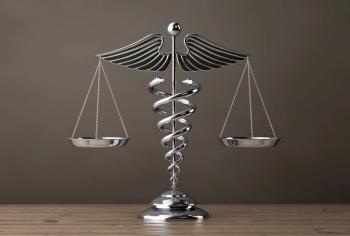
Health insurance does not guarantee medical care affordability
Survey finds patients who have coverage still must deal with high costs, debt burdens.
Your patients may be staying away from the office because health care is costly, even when they have
A new Commonwealth Fund
The results: Coverage does not necessarily mean it’s easy to pay for medical treatments.
“While having health insurance is always better than not having it, the survey findings challenge the implicit assumption that health insurance in the United States buys affordable access to care,” said the brief by researchers Sara R. Collins, Shreya Roy, and Relebohile Masitha. “Difficulties affording care are experienced by people in employer, marketplace, and individual-market plans as well as people enrolled in Medicaid and Medicare.”
The survey asked about all costs, ranging from insurance premiums, out-of-pocket copays and coinsurance, prescription and over-the-counter drugs, dental, vision and hearing care, and home and long-term care.
Overall, 51% of working-age adults said it very difficult or somewhat difficult to afford their health care costs. The number ballooned to 76% for people without health insurance, while 43% of people with employer-sponsored insurance agreed it was very difficult or somewhat difficult to pay. For people with Affordable Care Act Marketplace plans, 57% reported difficulty with affordability; 45% of people with Medicaid and 51% with medicare said the same.
“Given the necessity of insurance to defray the full cost of health care in the United States, it shouldn’t come as a surprise that the vast majority of people who had spent some time uninsured during the year would report difficulty affording their health care costs,” the study said. “More surprising is the large share of adults who had insurance all year but still report difficulty paying health care expenses.”
That leads to delaying or skipping care or prescription medicine – 38% of working-age adults reported they or a family member did so in the last year, due to cost. That ranged from 29% of people with employer-sponsored insurance, to 64% of uninsured people.
When patients postpone care, medical conditions may get worse. In every category of insurance, no fewer than 54% of respondents said that happened because they or a family member delayed or skipped care.
American adults are carrying medical or dental debt – 32% of them, and among them, 36% said they or a family member postponed care to avoid more. Medical and dental debt also caused anxiety or worry (78%), cutting back on basic necessities (39%), tapping into savings (37%), or dropping in their credit rating (36%).
Hospital care (54%) was the most commonly reported form of medical debt. Doctor’s office visits accounted for 37%, emergency care, 35%, and dental care, 30%, according to the survey.
Meanwhile, prices keep going up and that’s not helping people with medical debt. Overall, 65% of respondents said inflation in the last year affected their family’s ability to afford health care. Responses ranged from 60% for those in employer-sponsored care, to 80% for those with no insurance.
The report, “Paying for It: How Health Care Costs and Medical Debt Are Making Americans Sicker and Poorer Findings from the Commonwealth Fund 2023 Health Care Affordability Survey,” was published Oct. 26, 2023.
Newsletter
Stay informed and empowered with Medical Economics enewsletter, delivering expert insights, financial strategies, practice management tips and technology trends — tailored for today’s physicians.








